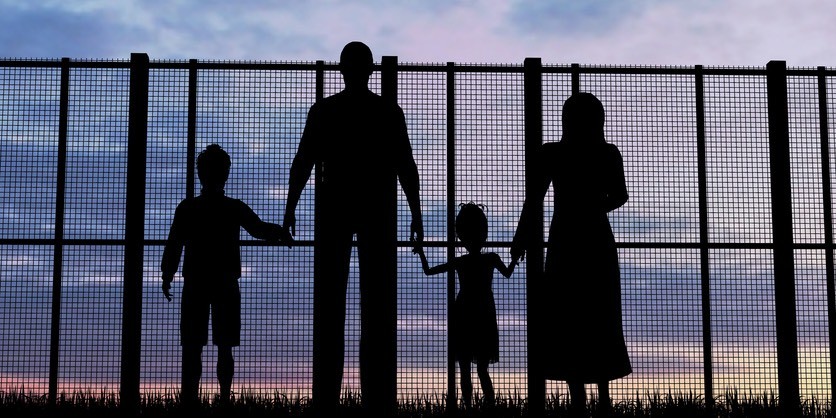According to the United Nations, there are three times more internal migrants than international migrants in the world. However, these migrants command much less attention in political debate and planning processes than international migrants. In addition, most migrants settle in cities and yet statistics on the number of migrants in cities are limited, particularly in developing economies where this information could inform better urban planning and ensure the preparedness of cities for migration.
In this context, as mandated by the World Economic Forum Future of Urban Development and Services Initiative Steering and Advisory Committees, the Forum explored the types, causes and patterns of migration, the most affected corridors and cities, the impact on urban infrastructure and services, the practical solutions and how cities can future-proof themselves to address this growing challenge.
The report highlights how cities can more efficiently and effectively deliver urban infrastructure and services to meet the needs of migrants and achieve long-term migrant integration with a high-level framework. This framework addresses the perception problem around migrants, their level of community engagement, policy reforms, inclusive urban planning mechanisms that cater to the long-term needs of migrants and the importance of responsive, outward-looking and action-oriented city leadership. In preparing and planning for migration, the report emphasizes the role of:
· Local government in mainstreaming migration in local development, collecting migrant data that feeds into urban planning, partnering with media organizations to disseminate evidence-based statistics on migration and implementing integration measures through a multistake holder approach consisting of migrant communities, international organizations, civil society and the private sector
· Migrant communities in participating in decision-making forums and support cities by articulating their interests towards establishing their rights
· Civil society in undertaking integration programmes with the support of cities to assist newcomers and encouraging migrants to become part of NGOs that could help other migrants facing similar challenges
· International organizations in engaging city leaders as advocates for formally including cities in developing migration policies
· Private sector in adhering to responsible recruitment and employment practices, while closing skill-gap requirements, and working with cities in designing long-term integration strategies to address anti-immigration sentiments
“Migrants are drawn to cities in search of economic, social and creative opportunities. As this trend will continue, we hope this report will assist city leaders in identifying best practice solutions to address the most pressing challenges presented by migration and provide a more informed cities’ perspective for the forthcoming United Nations Global Compact for Safe, Orderly and Regular Migration,” said Alice Charles, Lead, Cities, World Economic Forum.
The report captures the stories of 22 of the most affected cities around the world, including from North America (Montreal, Ottawa, Calgary, New York, Boston), Latin America (São Paulo, Medellin), Middle East and North Africa (Dubai, Amman, Ramallah), sub-Saharan Africa (Cape Town, Dakar), Asia (Pune, Surat, Guangzhou, Davao City), Europe (Berlin, Athens, Paris, Amsterdam, Rotterdam) and Oceania (Auckland). Each city has highlighted its key migration challenges and the solutions implemented or initiated, as well as the lessons that other cities can learn from their experience. For a detailed list of challenges and opportunities for each of these 22 cities across key sectors of urban infrastructure and services.
The four frequently cited challenges by cities interviewed for this report are shown below. The importance of satisfying basic needs was clearly highlighted from the information gathered from the cities.
“Cities are increasingly collaborating between themselves, within countries and across them, learning from each other and replicating best practices. Partnerships between cities will have greater prominence in the years to come, with possibilities of migrant redistribution and responding to labour market needs with immigrants,” said Gregory Hodkinson, Chairman, Arup Group Ltd; Chair of the World Economic Forum Future of Urban Development and Services Initiative.
He emphasized that city coalition networks enable cities to exchange ideas, solutions and best practices, as well as presenting opportunities to address implementation gaps by incorporating past learnings in addressing the challenges of migration.
In an effort to pave a path towards more sustainable development, the UN agreed the Sustainable Development Goals (SDGs) with 193 member states in September 2015. The SDGs recognize that well-managed migration will play an integral role in achieving sustaining development and SDG 11 is specifically dedicated to cities, with the objective to “Make cities and human settlements inclusive, safe, resilient and sustainable”.
“If migration is to be properly managed in our cities and sustainable development realized, it will require the cooperation of all stakeholders at the national, regional and global levels. Cities must identify the main legal and administrative priorities they need to address in order to enable the integration and adequate protection of migrants, particularly those not eligible for the same legal entitlements as refugees. They need to collaborate with national governments and with other stakeholders, including the private and non-governmental sectors, to overcome existing and future barriers to migrant integration,” said Louise Arbour, Special Representative of the Secretary-General for International Migration, United Nations.
Hazem Galal, Global Cities and Government Leader, PwC, said: “One of the biggest challenges faced by cities is integrating and offering services to migrants. By capitalizing on the skills migrants have to offer, cities can either enhance their competitiveness or increase the overall cost on their welfare system resulting from unemployment. By incentivizing private sector engagement and developing a working partnership, cities can ensure positive outcomes for migrants.”
Taking advantage of the competition between businesses and the overlapping interests to improve the state of urban infrastructure and services, public-private collaboration can play an essential role in facilitating migrants given the level of innovation and their capacity to efficiently raise and administer funds.

